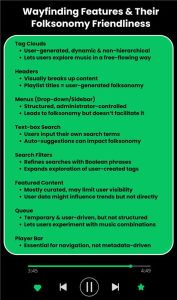It’s a Friday night, and you’re heading home from a concert. You open your Uber app, only to see the fare has tripled. Frustrating? Absolutely. But behind this sudden price spike is a complex AI-driven system ensuring that enough drivers are on the road to meet demand. This concept, known as dynamic pricing, is one of the most crucial ways AI has revolutionized ride-sharing services.
Uber’s surge pricing algorithm automatically adjusts fares based on real-time demand and driver availability. If more people request rides than there are drivers available, prices increase to incentivize more drivers to get on the road. While controversial, this system ensures that riders can get a car when they need it—just at a premium.
The Rise of Ridesharing Services
Ride-sharing services have transformed urban transportation, providing a practical and affordable alternative to taxis and personal vehicles. Companies like Uber, Lyft, and Didi have disrupted traditional taxi services, offering convenience, efficiency, and lower prices. Despite concerns over regulatory policies and competition with public transport, AI-driven ride-sharing models have increased economic efficiency and customer satisfaction.
AI’s Role in Ride-Sharing Services
AI powers multiple aspects of ride-sharing platforms, from route optimization to predictive maintenance. Here’s how:
-
Dynamic Pricing
AI algorithms analyze supply and demand to adjust fares in real-time. This not only helps match riders with available drivers but also encourages more drivers to be active during peak hours.
-
Route Optimization
AI-powered navigation tools ensure that drivers take the fastest and most fuel-efficient routes. By analyzing traffic patterns and road conditions, AI helps reduce travel time and fuel consumption.
-
Matching Algorithms
Ride-sharing platforms use AI to pair riders with drivers based on proximity, trip routes, and estimated arrival times. This improves efficiency and reduces wait times for customers.
-
Safety and Security
AI continuously monitors driver behavior, identifying risky driving patterns and issuing alerts when needed. Additionally, AI-driven facial recognition and ID verification systems enhance passenger and driver safety.
-
Predictive Maintenance
By analyzing vehicle usage data, AI can predict when a car might require maintenance. This helps companies reduce breakdowns and ensure a smoother ride experience for passengers.
How does Lyft enable Route Optimization
While Uber focuses on surge pricing, Lyft has taken AI a step further with route optimization. Its algorithm groups riders traveling in the same direction, reducing costs and travel time. This not only saves money for passengers but also increases ride efficiency for drivers. By leveraging AI, Lyft ensures that each trip is as streamlined as possible, benefiting both riders and drivers.
The Future of AI in Ride-Sharing
Despite its benefits, AI-powered ride-sharing faces some challenges:
- Privacy Concerns: Personal data collection raises questions about security and user privacy.
- Regulatory Issues: Governments worldwide impose different regulations, affecting AI implementation.
- Fairness in Pricing: While dynamic pricing is efficient, ensuring affordability for all users remains a challenge.
Looking ahead, AI’s role in ride-sharing will only expand. Autonomous ride-sharing fleets could redefine urban mobility, providing cost-effective, sustainable, and highly efficient transportation options. As AI continues to evolve, ride-sharing services will become even more adaptive, intelligent, and eco-friendly.
By embracing AI responsibly, the ride-sharing industry is paving the way for a future of smart, sustainable, and highly efficient mobility solutions. Buckle up—the future of transportation is just getting started!







